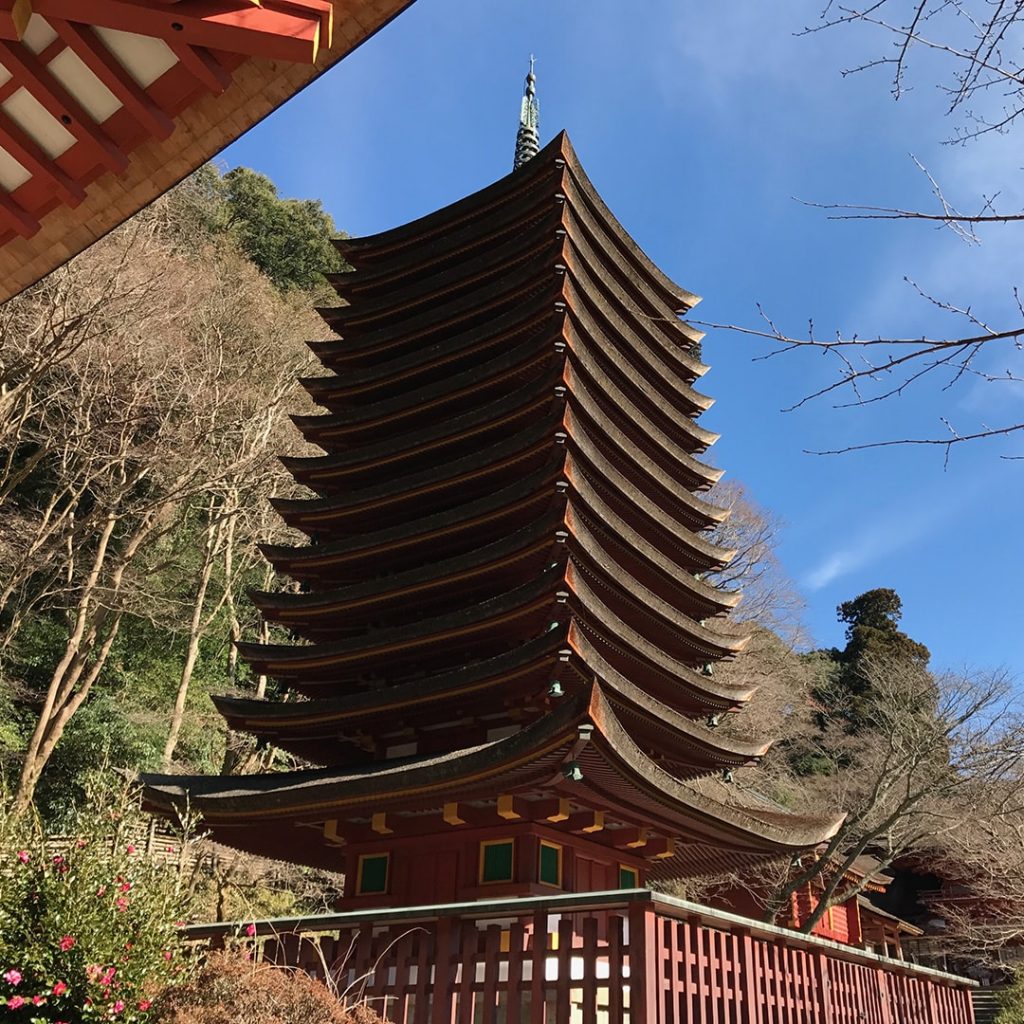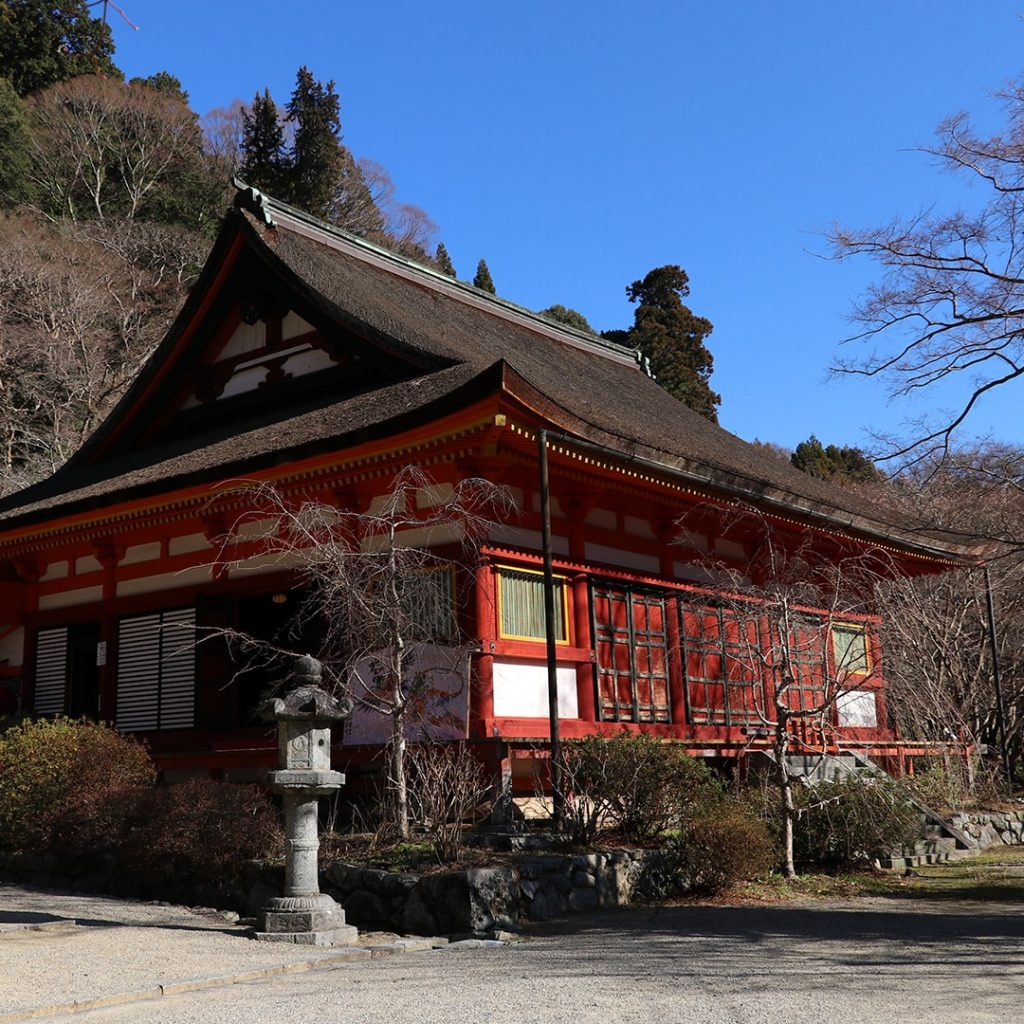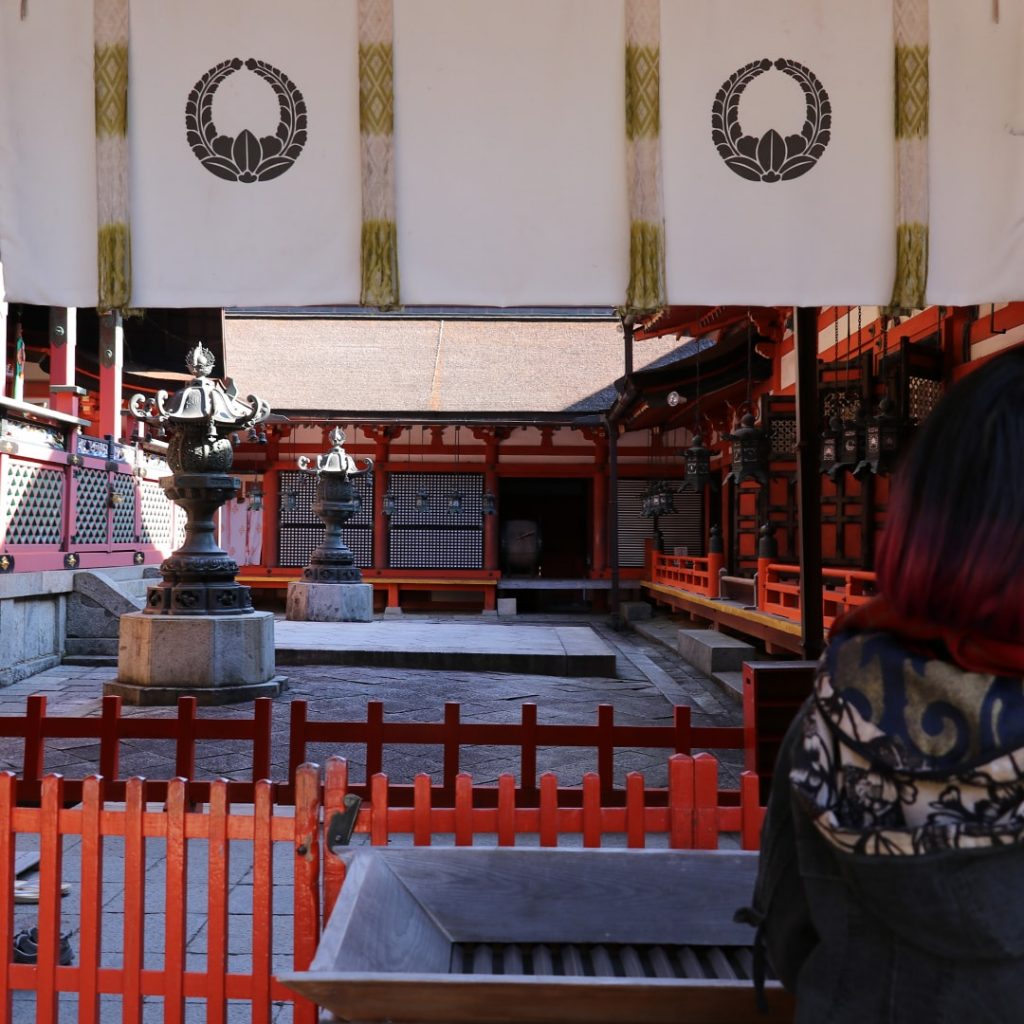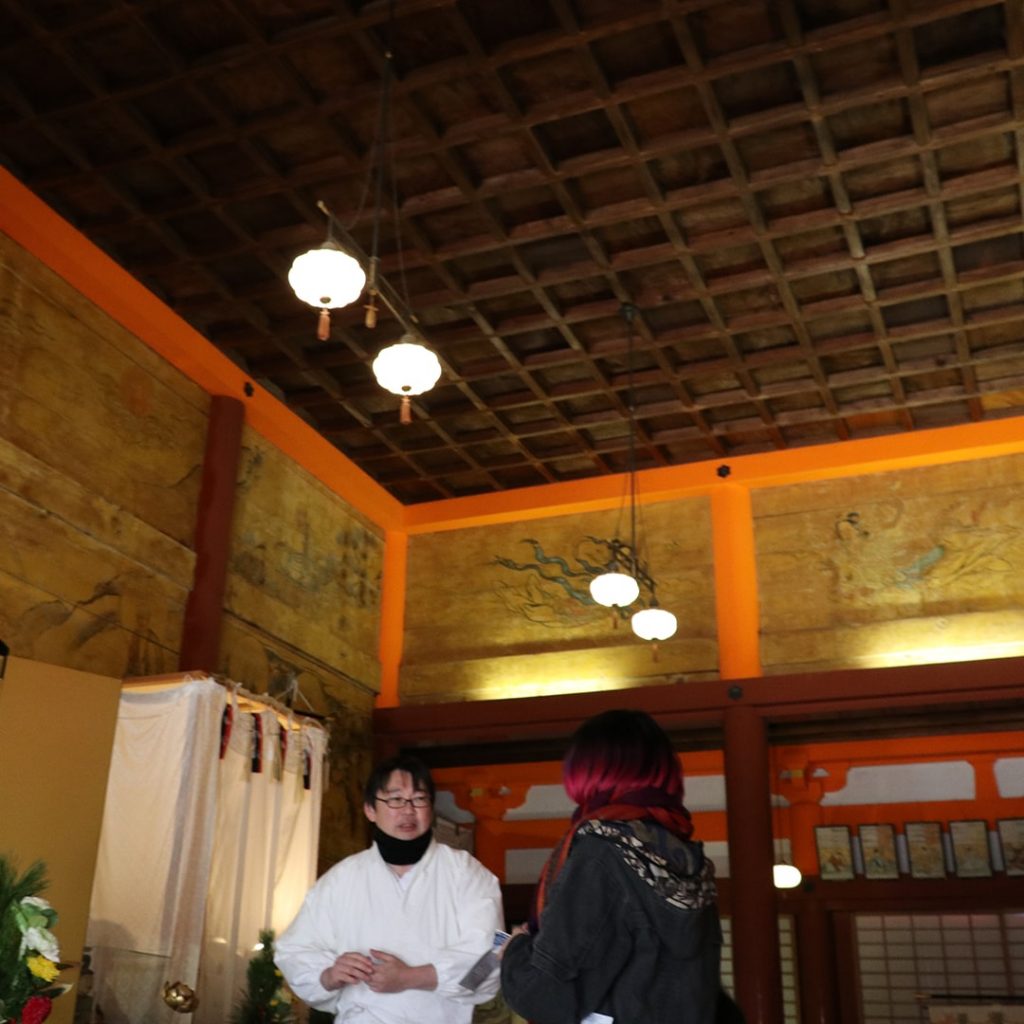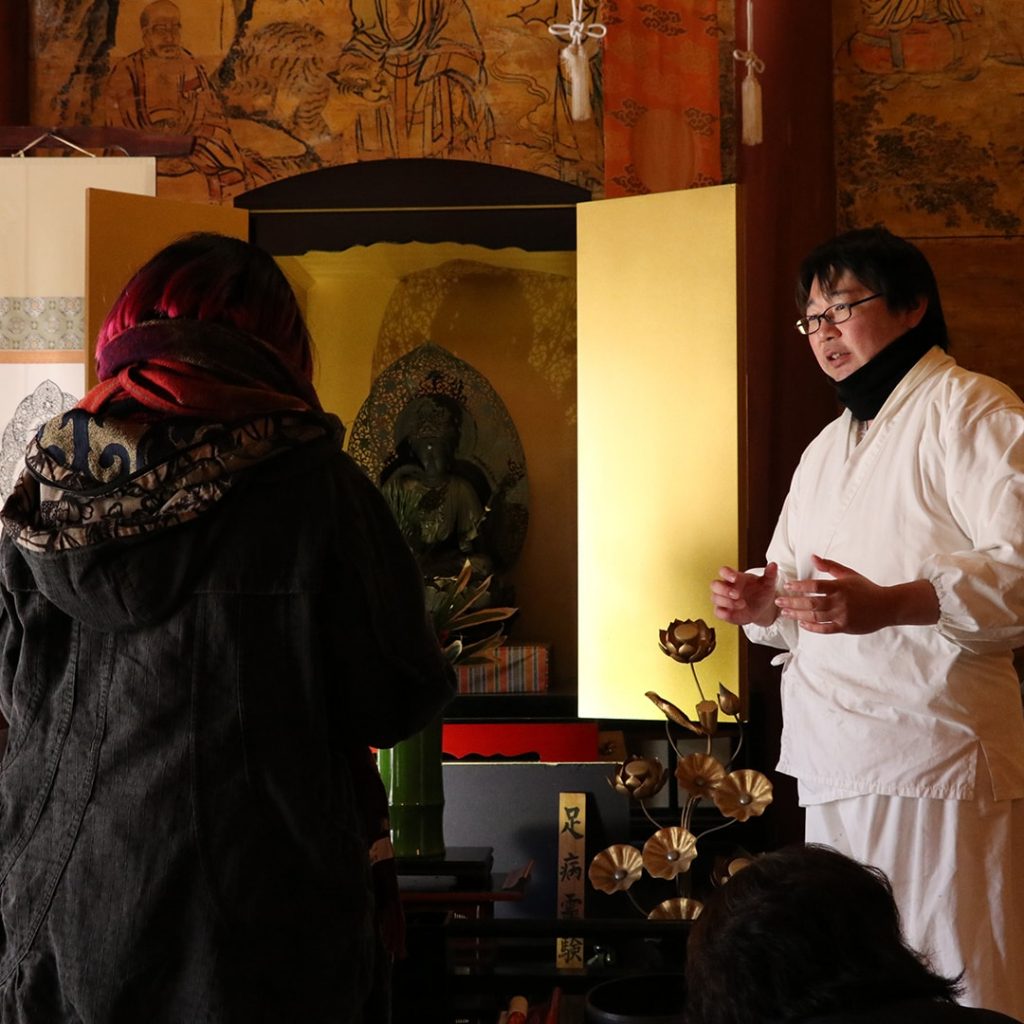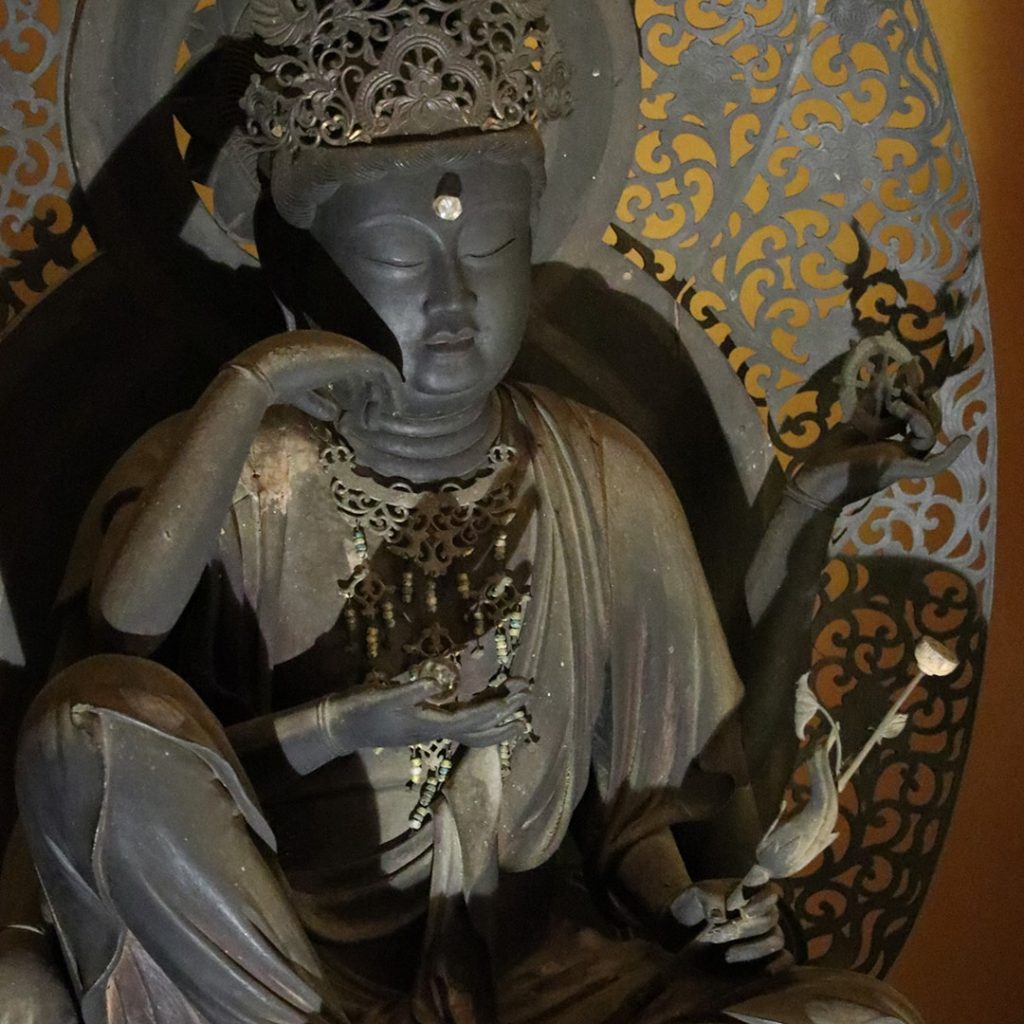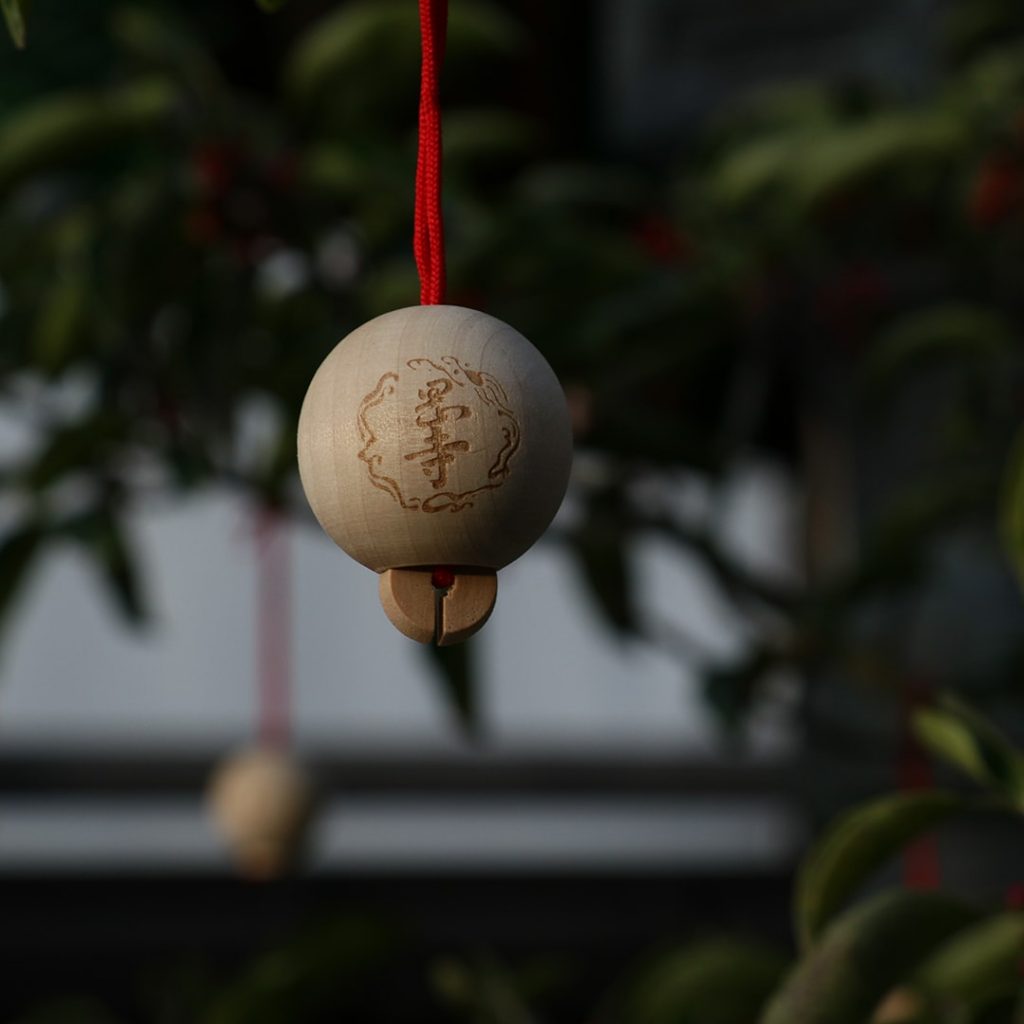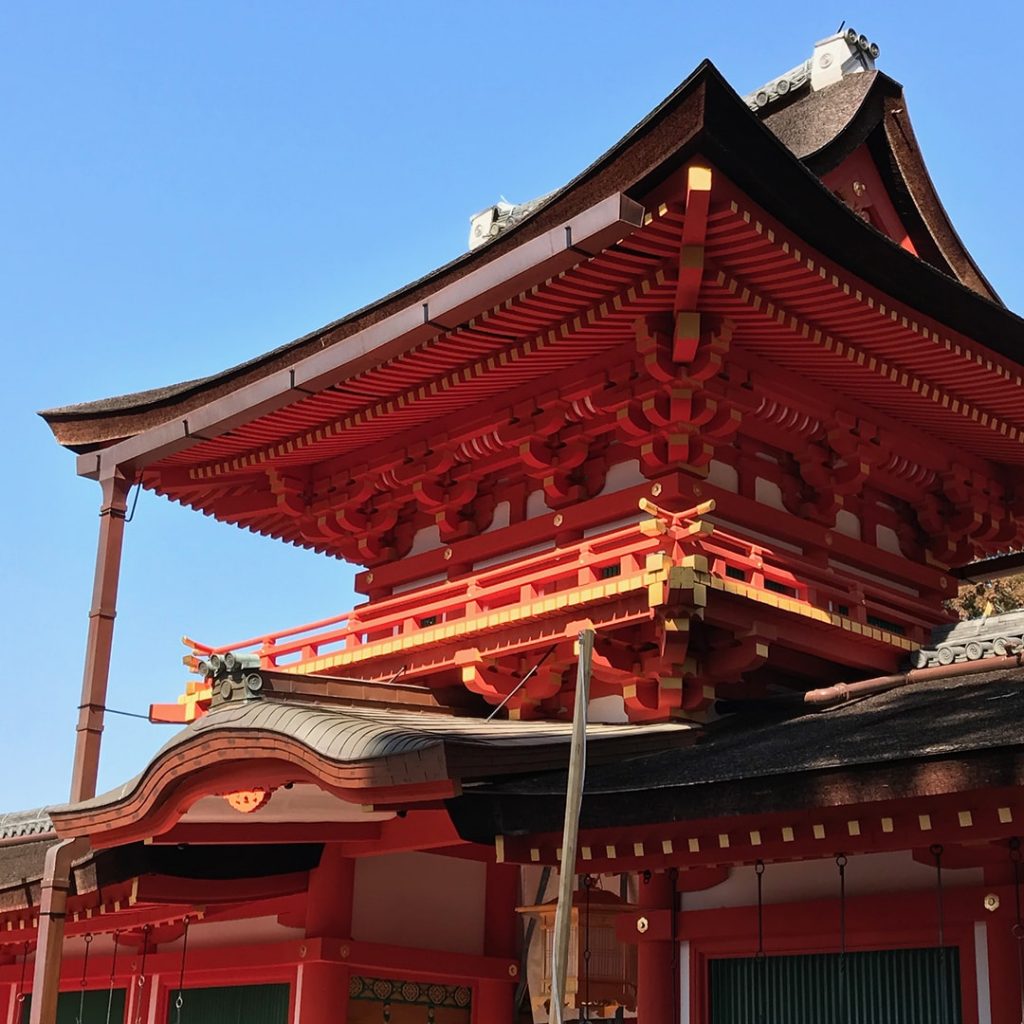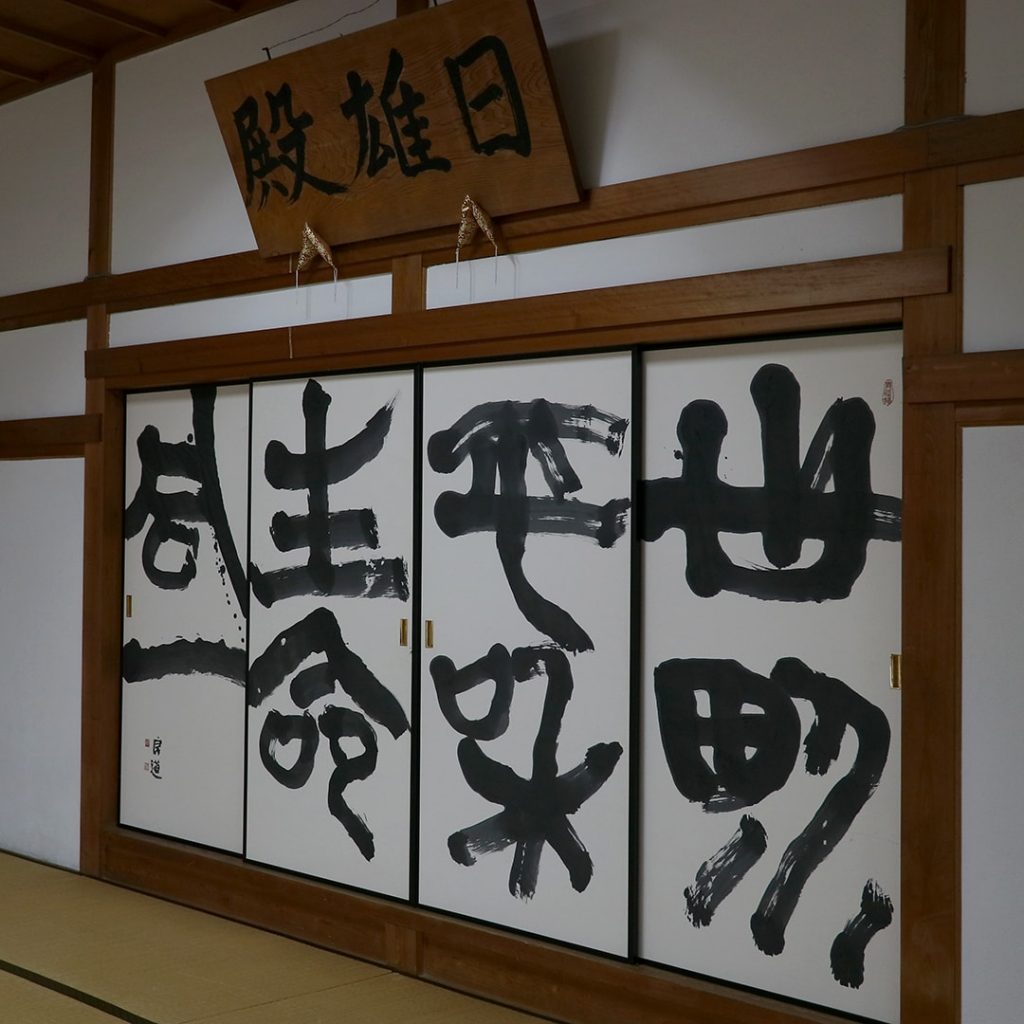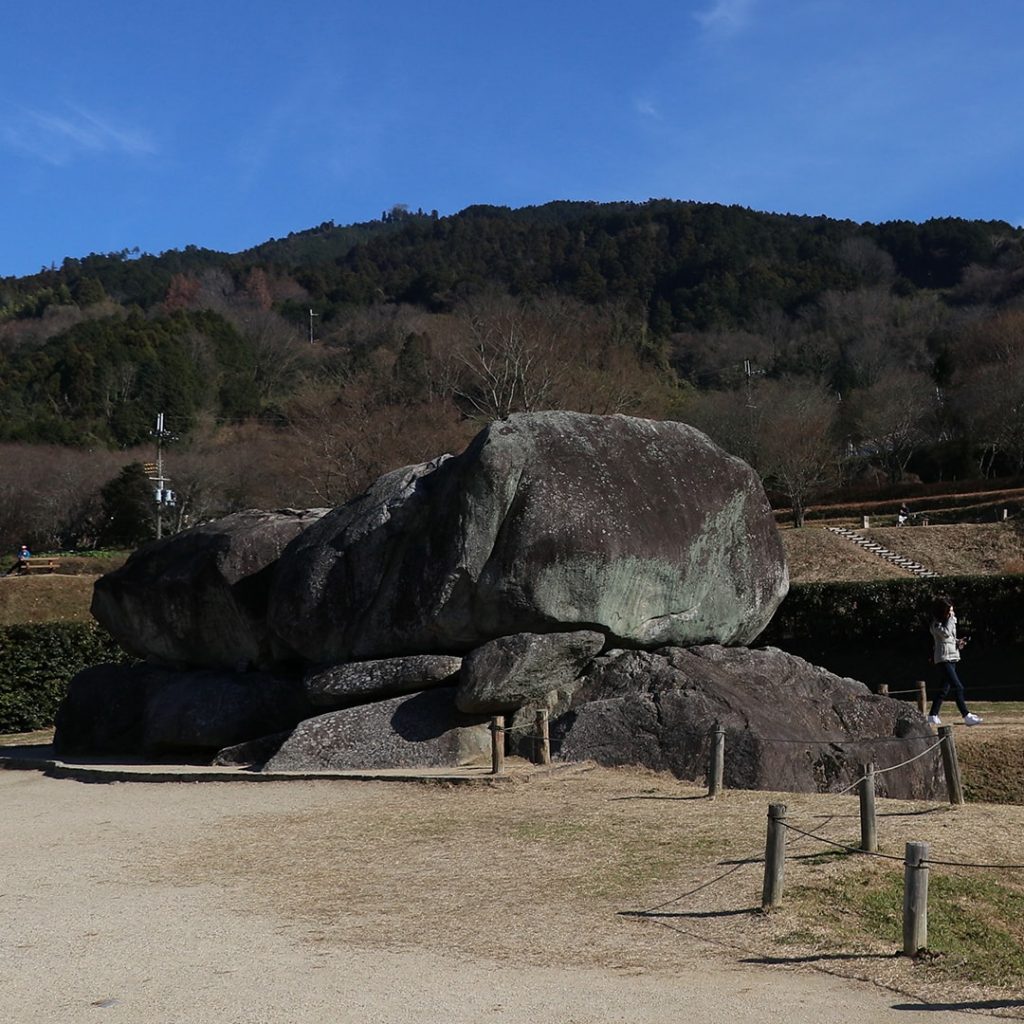The origin of the shrine is when the remains of Fujiwara no Kamatari was relocated from Mount Ai of Settsu Province to this place, and that Kamatari’s eldest son Joe built the 13-storied wooden pagoda (an important cultural property). The younger son Fujiwara no Fuhito established the shrine and enshrined the father’s statue. Though it used to be one with the Myoraku-ji temple, only the shrine remained after the ordinance to distinguish Shinto and Buddhism was executed in the beginning of Meiji era. The shrine was named after the term “Katarai-yama”, which is the historical reference to Kamatari and Prince Naka no Oe’s collusion to assassinate Soga no Iruka. Within the mountain of Tonomine, the vermilion-lacquered gorgeous shrines line, including Sakura-mon (important cultural property), Honden (Important cultural property), and Gonden (Important cultural property). Enshrining the statue of Kamatari, the main shrine (honden) has Sangensha (architecture of three-bay wide structure) Sumigiiri Kasuga-zukuri style structure and painted with gorgeous color lacquer, which has become the model for the Nikko Tosho-gu Shrine. The current pagoda is rebuilt during Muromachi period (1336-1573)and is 17 meters high. As the only 13-storied structure left among the ancient pagodas, it is said to be Kamatari’s tomb pagoda. While it is known for its view of autumn leaves, the cherry blossom in the spring, fresh verdue in the summer, and the view of snow-clad mountain in the winter can also be enjoyed throughout the year.


